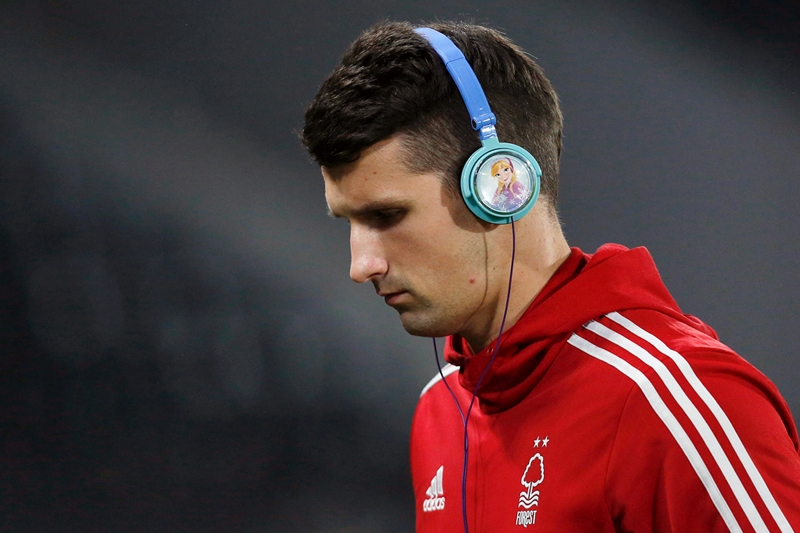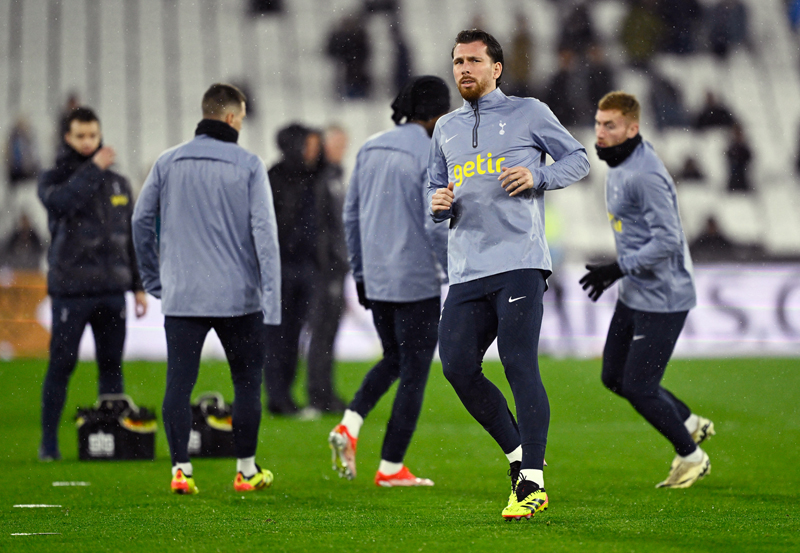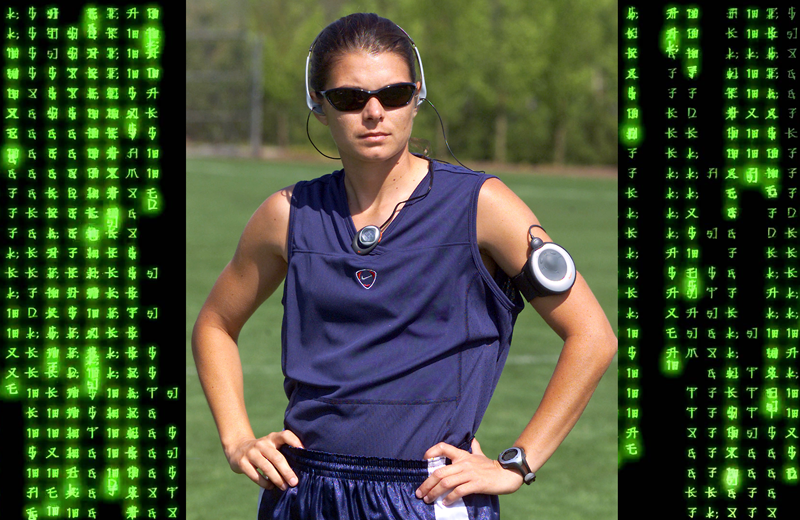The use of strategies such as goal-setting, imagery, self-talk and emotional control when working with athletes are highlighted in many textbooks on applied sport (1). This might lead aspiring coaches or practitioners to assume that integrating these strategies into the practice of an athlete’s preparation will automatically improve performance. However, it’s not as straightforward as that; there are many factors that influence the effectiveness of these strategies.
A key factor is the way in which strategies are explained to athletes, and the extent to which athletes begin using them as part of their preparation. A barrier faced by many sport psychologists is gaining credibility with the athletes and coaches they desire to work with (2) and some researchers have proposed that a significant contributor to the success of applied sport psychology is the development and maintenance of positive relationships with clients (3).
As most athletes are young individuals, the interests and activities of this age group are an important consideration. A feature of the last 20 years has been the rapid expansion of information technology. Young people are eager consumers of this technology and readily accept alternative means of communicating, including e-mail, text, and audio files, and web conferencing.
The potential benefits of harnessing this technology has been investigated within education settings in some depth (4). For example, one study showed that viewing video clips of dealing with difficult clients was an effective strategy in raising self-confidence toward facing a similar challenge. A key question for applied sport psychology practitioners and coaches, therefore, is what technologies will be used by, and beneficial for athletes?
Using music to enhance performance
The use of MP3 technology by athletes is often seen as an integral part of mental preparation and it’s commonplace to see athletes wearing headsets whilst preparing for competition. When journalists ask athletes what they listen to, their answers can differ considerably. The portability and flexibility offered by MP3 players provides opportunities for athletes seeking to manipulate performance states, visualise upcoming performances or simply act as a distracter.Athletes can often be observed preparing for competition by listening to music of their choosing, which is clearly a good starting point. However, the coach faces the task of harnessing this behaviour so that it helps the athlete. For example, an athlete who is engrossed in learning the words of the latest song might not be using technology to help them prepare!
Consultants are fortunate in that there is a degree of scientific study to inform the decision on what music to use (5). For instance, music can help to motivate an individual, attain pre-event activation or relaxation, focus concentration, dissociate from fatigue/discomfort, manipulate moods (increase positive moods and reduce negative moods), reduce perceived exertion, increase work output through synchronization of movement and music tempo, and improve motor skills acquisition when rhythm or association is matched with required movement patterns (6).
Nike has capitalised on such associations by designing sports shoes and clothing lines that accommodate MP3 hardware. This range is called Nike+, and the associated website (nikeplus.nike.com/nikeplus/?locale=en_gb) has pre-prepared sport mixes and ‘power songs’ selected because of their perceived positive impact on sports performance.
We have utilised the music functions of MP3 players to establish ‘performance folders’ for athletes. In a recent book(7), we described our work with a female athlete to enhance her use of this technology when preparing for tennis matches. She comments: ‘I have a relaxing play list that I have on in the way to a tournament in the car, then half an hour before I play, I have my pump up play list which has got all my upbeat songs. After my match I go back to my relaxing play list again. If I’m just walking around at a tournament I have a random play list on to get myself in a good mood.’
A recent study identified how music was used to support preparation and performance for an athlete over the course of a season(8). Results show the idiosyncratic nature of music preference. Each track was selected by judging its motivational implications. Slow, relaxing music (relatively for the individual) was selected for very light jogging and stretching phase of the warm up. This was followed by slow tracks that had meaningful lyrics, chosen for a 15-minute aerobic warm-up. The process continued until the final 15 minutes of each race in which high tempo tracks were selected. In selecting music to listen to during performance, he rated each song in terms of its motivational implications.
Typically music folders are arranged on an MP3 player to contain music of different genres. However, we assist athletes in developing music folders with specific purposes. For example, folders may be established containing music that is intended to relax, energise, motivate, develop confidence or a various combinations of these.
We encourage athletes to develop folders to meet these objectives while also addressing their personal musical preferences. Athletes also need to think about how effective these tracks are for the intended purpose on a regular basis so that they remain purposeful and contemporary. The intended purpose of music can vary according to the event and the state of the athlete at any particular time. For example, en-route to competition, he or she may wish to listen to music they find relaxing, or if feeling lethargic and sluggish, they may select music that they find motivating and inspiring.
An important feature of this work is the client-athlete relationship. The idiosyncratic nature of musical preference makes it difficult for a coach to recommend which track to listen to other than on a very generic level. For example, we suggested listening to tracks with a fast tempo and meaningful lyrics to a male athlete we worked with. He selected tracks such as ‘Decontrol’ by the punk band Discharge and heavy metal such as ‘Overkill’ by Motorhead. By contrast, the female mentioned above athlete included the song ‘Something inside so strong’ by Labi Siffre in her pre-competition play list because she found the lyrics helped her attain a motivated, confident and determined state.
Of course, both athletes are correct in their choices providing the tracks evoke the intended psychological response. The consultant’s role is to assess the strength of this response and encourage the athlete to reflect on the effectiveness of each track. A key feature of this relationship is that the client needs to be empowered in the process; he/she selects the tracks, and reports on their effectiveness.
When reviewing the possible uses of the MP3 player, it is apparent that it has potential beyond music that is often untapped by practitioners. Picture the scenario of a coach who is making technical adjustments to skill execution. The coach may wish to pursue a means of reinforcing the rationale and finer details of change that persists beyond contact sessions. In monitoring the process of change, the coach may ask an athlete to reflect on their experiences with the changes being made, and the difficulties in maintaining them. The MP3 player may facilitate the successful attainment of both objectives (reinforcement and monitoring of change).
Facilitating and reinforcing change
MP3 players such as the iPod contain an accessory called a ‘voice recorder’ which can be plugged into the top of the device enabling thousands of hours of audio recording time. A coach may therefore produce an audio recording intended for use by the athlete. Using the example of reinforcing technical changes, the coach may produce a recording in which they outline the various stages and the rationale of planned technical adjustments. Within the narrative a coach can direct the athlete’s attention back to specific training sessions or competitive performances.Another option for coaches is to prepare video digital media files with audio narrative related to training or lessons from competition. Once recorded, MP3 and video digital media files may be e-mailed to the athlete, loaded directly onto the MP3 player (video facility required for video digital media), or posted on the internet.
Using the internet to host media files intended for playback on a mobile device such as an MP3 player or personal computer is know as podcasting. Research exploring the use of MP3 players in education suggests that podcasts can be effective in enhancing student engagement, reflection, communication, time management and critical thinking (9) These outcomes are clearly of benefit to a coach wishing to empower an athlete in a learning process. Furthermore, podcasting, direct downloading and e-mailing audio and video digital resources, enables an athlete to revisit the information provided where, when and as often as desired.
Facilitating reflection
Sport psychologists who have reviewed their experiences in encouraging athletes to complete and review interventions have suggested ‘athletes hate paperwork’ (10). The audio recording function of the MP3 players can facilitate quick, timely and efficient reflective practice. For example, a coach may reflect upon the use of a new training drill, record a live match commentary to facilitate later reflection, or record observations for an athlete in respect of an agreed objective for later reflection and discussion.Practitioners and athletes can use reflective practice to give meaning to past experiences, and use the insights and understanding gained from examining past performance to improve future practice (11). For example, research shows that in elite coaching, squad sessions allow the discussion of key issues, selection of appropriate strategies for performance enhancement, and reflection on their usefulness (12). Audio recording on an MP3 player can be used by coach and athlete to record discussions such as those that occur in training or on other occasions such as post-competition and in doing so, facilitate accurate recall and assist with the implementation of change and future evaluation.
Using video to enhance performance
The advent of video MP3 players has introduced further possibilities for the use of technology among sport and exercise psychologists, coaches and athletes. Within our practice we use video iPod players to reinforce correct technique, direct attention to key goals/objectives, and to motivate athletes. For example, digital video images can be captured of an athlete performing well in training or competition. These can then be edited in a range of ways before being downloaded onto an MP3 player.For example, images of the athlete performing can be merged with images of the role models they aspire to beat. Text can be incorporated into the images to motivate, inspire or direct attention to goals or key features of performance. An athlete’s personal music choice, designed to meet the purpose of the video (eg motivate, calm, focus attention, etc) can accompany the images. Developing personal videos is costly in terms of equipment required and the time taken to produce the video. However, as computer technology becomes more sophisticated the ability to produce videos with associated music becomes easier.
Conclusion
Athletes value technology and coaches can build upon this by demonstrating how it can be used effectively to enhance performance. In particular, coaches should seek to build upon, and not neglect the existing behaviours of those they work with. Such action can help coaches establish the positive relations that are so critical to the success of applied work. In the process, coaching knowledge will continue to evolve and develop through these interactions. What better way is there to forge a strong working partnership than the pursuit of mutually beneficial knowledge and understanding?Tracey Devonport is a senior lecturer in sport and exercise psychology at the University of Wolverhampton
Andy Lane is professor of sport and learning at the University of Wolverhampton and editor of the ‘Sport and Exercise Scientist’, published by the British Association of Sport and Exercise Sciences
References
1. Sport and Exercise Psychology: Topics in applied psychology. Topics in Applied Psychology, ed. G. Davey. London: Hodder Arnold, 2008
2. Applied Sport Psychology: Enhancing performance using psychological skills training, in Sport and Exercise Psychology: Topics in applied psychology, A.M. Lane, Editor, Hodder-Stoughton, UK, 2008.
3. Psychology of Sport & Exercise. 7 p325-337.2006
4. Nurse Education Today. 26 p200-208.2006
5. The Scientific Application of Music in Sport and Exercise. Sport and Exercise Psychology: Topics in applied psychology, ed. L.A. M, Hooder-Stoughton: London 2008.
6. International Journal of Sports Medicine. 29 p. 613-619, 2008
7. Anger, Emotional Intelligence, Performance and Interventions, in Psychology of Anger, E.I. Clausen, Editor, Nova Publishers: Hauppauge, NY 2007
8. Using Music to Facilitate Fatigue Management During Long-duration, High-intensity Exercise. in Music, Health and Happiness. Royal College of Northern Music Year, 2008
9. J Ed. Tech. Systems, 34(1), 5-32, 2005
10. The Sport Psychologist 17 p350-388.2003
11. Guided Reflection, in Reflective Practice in Nursing, A. Palmer, S. Burns, and B. C, Editors. Blackwell Science: Oxford, 1994.
12. Reflective Practice. 5 p425-442.2004
 Professor Andy Lane and Tracy Devonport explain why athletes should definitely consider using music and video technology to enhance performance
Professor Andy Lane and Tracy Devonport explain why athletes should definitely consider using music and video technology to enhance performance








